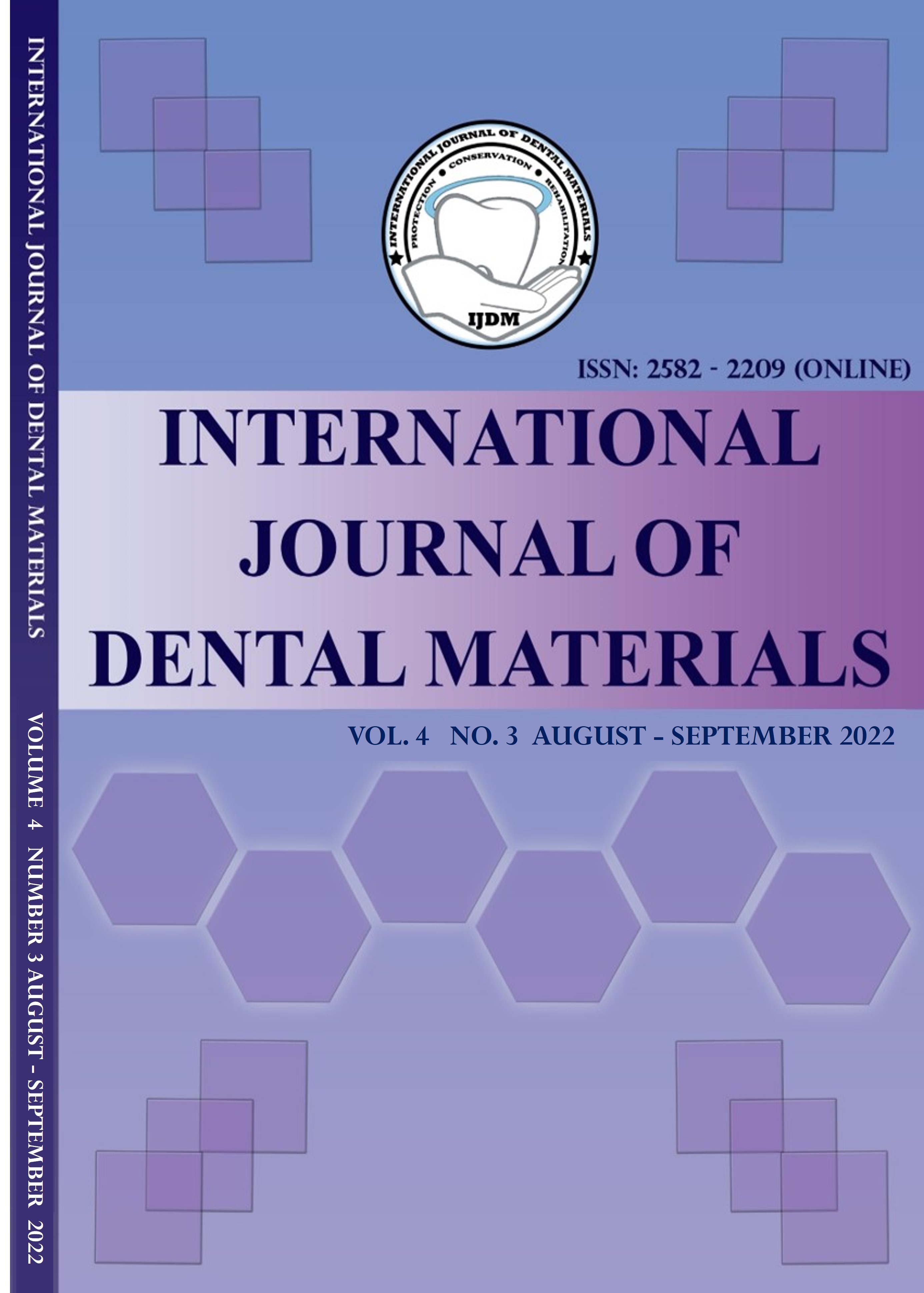Prosthetic management of severely resorbed mandibular ridge using neutral zone technique in complete dentures: a case report
Main Article Content
Abstract
Any prosthodontic procedure aims to restore a patient's function, contours, aesthetics, speech, and health to normal. In traditional complete dentures, achieving optimal denture stability is always found to be a challenge. This is often exacerbated in resorbed mandibular ridges. Therefore, this article describes a strategy for enhancing the retention of mandibular complete dentures for individuals with an extremely resorbed ridge. A patient reported to the department of prosthodontics with a chief complaint of loose dentures and wanted to get them replaced. A complete clinical examination was carried out which revealed severely resorbed mandibular ridge. After a complete evaluation, prosthetic rehabilitation with a complete denture using the neutral zone technique was panned. The complete denture was made and delivered to the patient was superior in terms of stability, function and aesthetics. The clinician should understand the advantages of the neutral zone technique and implement it in clinical practice so that a prosthesis that is functionally, physiologically and psychologically acceptable to the patient can be delivered.
Article Details
Section

This work is licensed under a Creative Commons Attribution 4.0 International License.
This work is licensed under a Creative Commons Attribution 4.0 International License.
How to Cite
References
Bolk L, Goppert E, Kallius E, Lubosch W. Principles of Full Denture Prosthesis. By E. WILFRED FIsH. (London: John Bale, Sons and Curnow, Ltd.) 1937. Pp. ix+ 116.
Fahmy FM, Kharat DU. A study of the importance of the neutral zone in complete dentures. J Prosthet Dent. 1990;64(4):459-62. https://doi.org/10.1016/0022-3913(90)90043-C
Fish EW. Using the muscles to stabilize the full lower denture. J Am Dent Assoc (1922). 1933;20(12):2163-9. https://doi.org/10.14219/jada.archive.1933.0343
Brill N, Tryde G, Cantor R. The dynamic nature of the lower denture space. J Prosthet Dent. 1965;15(3):401-18. https://doi.org/10.1016/S0022-3913(65)80009-9
Grant AA, Johnson W. An introduction to removable denture prosthetics. Edinburgh: Churchill Livingstone 1983:24-28.
Watt DM, MacGregor AR. Designing complete dentures. WB Saunders Company; 1976.
Wright SM. The polished surface contour: a new approach. Int J Prosthodont. 1991;4(2):159-63.
Roberts AL. The effects of outline and form upon denture stability and retention. Dent Clin North Am 1960;4:293-303. https://doi.org/10.1016/S0011-8532(22)02551-4
Schlosser RO. Complete denture prosthesis. Philadelphia: WB Saunders 1939:183-90.
Beresin VE, Schiesser FJ. The neutral zone in complete dentures. J Prosthet Dent. 1976;36(4):356-67. https://doi.org/10.1016/0022-3913(76)90155-4
Cagna DR, Massad JJ, Schiesser FJ. The neutral zone revisited: from historical concepts to modern application. J Prosthet Dent. 2009;101(6):405-12. https://doi.org/10.1016/S0022-3913(09)60087-1
Alfano SG, Leupold RJ. Using the neutral zone to obtain maxillomandibular relationship records for complete denture patients. J Prosthet Dent. 2001;85(6):621-3. https://doi.org/10.1067/mpr.2001.115534
Taylor M, Masood M, Mnatzaganian G. Longevity of complete dentures: A systematic review and meta-analysis. J Prosthet Dent. 2021;125(4):611-9. https://doi.org/10.1016/j.prosdent.2020.02.019
Porwal A, Sasaki K. Current status of the neutral zone: a literature review. J Prosthet Dent. 2013;109(2):129-34. https://doi.org/10.1016/S0022-3913(13)60030-X

